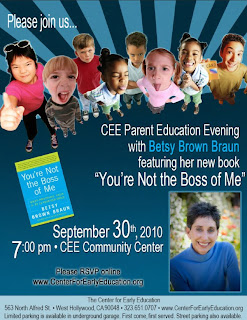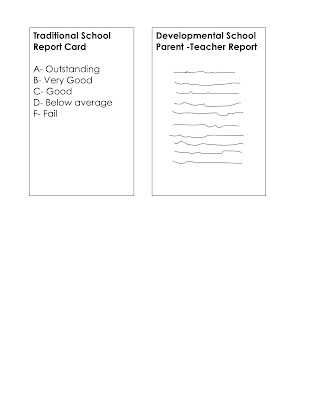The Switch: From Public To Private School: The First Week
By now, I probably don’t need to reiterate that my daughter switched, at 4th grade, from 3rd St. Elementary (a public school), to Mirman School. And last week was her first week.
As with any beginning, adjustments abound. And Anna* hasn’t had the greatest track record when it comes to school switches. Take, for instance, her first month or so at Montessori Shir-Hashirim preschool. I believe she spent most of it engaged in a one-child boycott of school activities, on the floor under a desk where she would be forcibly dragged out and made to do “jobs.” She was tough; the staff there was tougher. Eventually, she was broken and became a participant. But she was always on the bench (upon graduation, my mother offered to donate a bench named in Anna’s honor).
Cut to the switch to first grade at 3rd St. As I’ve previously written, she was assigned a truly dreadful first year teacher (ironically, according to the just released LA Times teacher standardized test scores, this teacher would have been considered “good.” This teacher was proof positive that the STAR tests can’t be the sole criteria used to evaluate a teacher). Anna butted heads with this woman immediately. She flaked on the homework assignments (copious amounts of busy work for six year olds). She skipped out after going to the girl’s room during class time and played on the monkey bars. She exhibited the rebellious behavior of a bored teenager.
There were other things about public school that rankled. I don’t think I’m exaggerating when I state that the social scene is a bit like Lord of the Flies. Anna, in first grade, got a romantic offer from a fifth grader (my advice to her: never go near that little cretin again). She was the victim of a truly sophisticated form of girl terror in first grade the likes of which surprised me; I had no idea six year old girls could be that socially ruthless in the pursuit of power.
It only got more bizarre in third grade, when she was the recipient of an anti-Semitic comment. I grew up in L.A., and I have NEVER experienced any sort of anti-Semitism. To the school’s credit, it handled the situation well, but I felt sort of sad that Anna had to deal with that kind of garbage at all.
So, given her track record, I was fully prepared for some trauma upon switching to Mirman. What would the week bring?
I first thought that the uniform would be an issue. Anna has a definite style. But, as it turns out, she actually finds the uniform a relief. She has almost no decisions to make in the (very early) mornings now. She likes the shorts, the polo shirts, and the utility of it all. She’s even started wearing her glasses every school day.
Next, I was worried about the social makeup. It’s a small school. And Anna is the only new fourth grade student. Talk about being the ultimate new kid, and perhaps a real target. But I’ve seen none of that. The first day, Anna did say, “Well, I already have an enemy.” She said it in such a cheerful tone of voice, though, that it didn’t seem to be a concern. Sure enough, by the end of the week, she decided the girl was “really nice.” Of course, there’s one noisy, obnoxious boy whom Anna claims to loathe, but that’s par for the course in any classroom.
Next, I was concerned about the schoolwork itself. And it’s pretty clear to me that she’s behind in math. She told me that there’s testing this week, and that it was going “badly.” I’m sure it’s hard for her to go from having it so easy in public school to feeling far behind in private, but math is something that can be taught, and she’ll just have to learn it. It’s a valuable lesson best taught at an early age.
The biggest snafu was a carpool screw up which left Anna stranded at Mirman on Thursday. No one was amused. Anna’s abandonment freaked her out a bit. And it’s hard to describe my panic, being fifteen miles away from the school with rush hour rapidly approaching. On the bright side, I highly doubt a massive carpool fail such as this will ever happen again.
But these are small problems. The big picture is overwhelmingly positive. When asked about her first week, Anna gave it a “seven out of ten,” mostly because she was left up there on Thursday. That’s not bad for a first week at a new school. The best thing she said, though, was after the first day. Every day after school since first grade began, I’ve asked her, “What did you learn today?” For years now, she’s either said, “Nothing” or “I can’t remember.” But that first day at Mirman, when I picked her up, she volunteered information.
“Guess what I learned today, Mom?” she asked.
“What?” I replied.
“About a million things,” Anna answered.
Enough said.
*name changed for privacy
Jenny Heitz has worked as a staff writer for Coast Weekly in Carmel, freelanced in the South Bay, and then switched to advertising copywriting. She now writes about gift ideas and products on her blog, Find A Toad.


